Badlands Media will always put out our content for free, but you can support us by becoming a paid subscriber to this newsletter. Help our collective of citizen journalists take back the narrative from the MSM. We are the news now.
So far in this series, we’ve discussed the Council on Foreign Relations, the Trilateral Commission, the World Economic Forum and the Bilderberg Group. In this edition, we’ll be going over another highly influential, clandestine faction of the Cabal: the Rockefellers.
When David Rockefeller Sr. died in 2017, at the age of 101, he was worth $3.3 billion—at least according to Forbes, but often true power isn’t measured in dollar amounts but rather by influence, clout, and connections. Additionally, elites who are as savvy as the Rockefellers likely know how to maintain wealth off the books.
The real OG American robber baron was none other than David’s grandfather, John Davison Rockefeller.
John D. continues to be the most recognized (and perhaps most despised) billionaire to have ever walked the earth, even though he's been dead since 1937. During the past century, no one family in America has assembled such power and influence as the Rockefellers, thanks to their wealth and close ties to England (and, by extension, the true and hidden elites of Geneva, Switzerland).
In the past, the Rockefeller name continually cropped up in any discussion of secret societies, but today's media rarely speak of the Rockefeller role in world events. Despite this, not long ago the name of John D. Rockefeller was on everyone's lips, and his finances were known to all.
A now-infamous edition of a rural Texas newspaper reported:
"John D. Rockefeller sleeps eight and one-half hours every night, retiring at 10:30 and rising at 7. Every morning when he gets up he is $17,705 richer than he was when he went to bed. He sits down to breakfast at 8 o'clock and leaves the table at 8:30, and in that short half-hour his wealth has grown $1,041.50. On Sunday he goes to church, and in the two hours he is away from home his riches have grown $4,166. His nightly amusement is playing the violin. Every evening when he picks up the instrument he is $50,000 richer than he was when he laid it down the previous night. These little facts give some idea of the relentless growth of this man's fortune."(1)
John D. Rockefeller devoted much of his fortune to “philanthropic” work, including gifts to prominent universities, medical research, and the promotion of eugenics. His influence made him among the most reviled figures in American history, especially during the great depression, but there was also a positive spin: that his remarkable story was the product of the success of American capitalism, or so they thought …
When Rockefeller’s monopolistic practices eventually triggered Congressional investigations during the era of “trust buster” Theodore Roosevelt, it was revealed that the National City Bank of Cleaveland, which financed Standard Oil, was in fact a Rothschild bank.
According to author Eustace Mullins:
John D. Rockefeller's success began when he obtained the backing of the National City Bank of Cleveland to finance his takeover of his competitors in the oil business. Because J.P. Morgan and Kuhn, Loeb Co. controlled 95% of all railway mileage in the U.S. in the latter half of the 19th century, they offered Rockefeller special rebates on shipping oil through his holding company, South Improvement Co. This enabled him to undersell and ruin his competitors. One of them was a Mr. Tarbell, whose daughter, Ida Tarbell, later wrote the first expose of Standard Oil and was termed a "muckraker" by Theodore Roosevelt, a term which promptly went into the language. The entire Rockefeller empire was financed by the Rothschilds.
I personally believe that Mullin’s take, while not off the mark, does diminish John D. Rockefeller’s role in his own success.
There’s an anecdote told by Nelson Rockefeller that might shed some light on where John D.’s business philosophy developed from:
It seems when John D. was a small child, his father, William "Big Bill" Rockefeller, who sold cancer "cures" from a medicine wagon, taught him to leap into his arms from a tall chair. One time his father held his arms out to catch him, but pulled them away as little John jumped. The fallen son was told sternly, "Remember, never trust anyone completely—not even me."
The Rise of Standard Oil
At the start of the American Civil War, Rockefeller was a young agricultural commodities broker in Cleveland, Ohio. He quickly recognized the potential of the fledgling petroleum industry there, and in 1863, he and some associates built a refinery. In 1870, he incorporated the Standard Oil Company of Ohio.
According to an investigative video entitled "The Money Masters”:
"The National City Bank of Cleveland, which was identified in congressional hearings as one of three Rothschild [the dominant European banking family] banks in the United States, provided John D. Rockefeller with the money to begin his monopolization of the oil refinery business, resulting in the formation of Standard Oil," (#)
It was Rockefeller who notoriously stated, "Competition is a sin."
He ruthlessly eliminated competitors by either merging with them or buying them outright. Failing that, he cut prices until his competitors were forced to sell. He also managed lucrative railroad rebate agreements, which ensured him a near monopoly on the transportation of oil. Standard Oil—the direct ancestor of Exxon—prospered enormously, and by 1880 Rockefeller owned or controlled 95 percent of all oil produced in the United States.
John D. encountered his first spell of backlash in the media in 1902 with the publication of a series of articles by Ida Minerva Tarbell, the daughter of a Pennsylvania oil producer that had been run out of business by Rockefeller.
Based on five years of research, Tarbell's series was published in McQure'a Magazine and entitled "The History of Standard Oil Company."
One reviewer proclaimed her work a "fearless unmasking of moral criminality masquerading under the robes of respectability and Christianity."
“If it has taught us anything, it is that our present law-makers, as a body, are ignorant, corrupt, and unprincipled; that the majority of them are, directly or indirectly, under the control of the very monopolies against whose acts we have been seeking relief. ” — Ida Tarbell, History of Standard Oil Company
Tarbell's expose would lead to governmental and court actions that at least appeared to break up Standard Oil's monopoly. However, as early as 1882 Rockefeller had moved to mask his business dealings by creating the first great American corporation: the Standard Oil Trust.
The New Encyclopaedia Britannica explained,
"The trust embraced a maze of legal structures, making its workings virtually impervious to public investigation and understanding,"
Such maneuvering continued in 1892, when the Ohio Supreme Court ordered the trust dissolved. Instead, Rockefeller simply moved Standard's headquarters to New York City, and in 1899 all assets and interests were transferred to a new monstrosity, the Standard Oil Company of New Jersey.
John D.’s troubles continued In 1906, when the U.S. government charged Standard Oil with violating the Sherman Anti-Trust Act. Although apologists argued that Standard was simply caught in an emotional tidal wave of public discontent over the excesses of big business, the U.S. Supreme Court on May 15, 1911 couched its decision in these clear terms:
"Seven men and a corporate machine have conspired against their fellow citizens. For the safety of the Republic, we now decree that this dangerous conspiracy must be ended by November 15th."
Eight of the companies formed after the dissolution retained "Standard Oil" in their names, but even these were soon altered to present the image of diversity.
Standard Oil Company of New York first merged with the trust company Vacuum Oil to form Socony-Vacuum, which in 1966 became Mobil Oil Corporation. Standard Oil of Indiana joined with Standard Oil of Nebraska and Standard Oil of Kansas, and by 1985 had become Amoco Corporation. In 1984, the combination of Standard Oil of California and Standard Oil of Kentucky became Chevron Corporation, while the old Standard Oil of New Jersey in 1972 became Exxon Corporation. Other former Standard companies include Atlantic Richfield, Buck-eye Pipeline, Pennzoil, and Union Tank Car Company. (#)(#)
Ironically, the breakup of Standard only increased the wealth of Rockefeller, who now owned one quarter share of thirty-three different oil companies created by the breakup of Standard Oil. John D. Rockefeller became the world's first confirmed U.S. dollar billionaire in 1916. (#)
By the time of his death in 1937, Rockefeller and his only son, John D. Rockefeller Jr., had not only built up an amazing oil empire, but had also established such institutions as the Rockefeller Institute for Medical Research (established in 1901), the General Education Board (1903), the University of Chicago (1889), the Rockefeller Foundation (1913), the Lincoln School (1917), where the Rockefeller children began their educations, and Rockefeller University in New York City.
Rockefeller Medicine
In 1899, a doctor by the name of George H. Simmons began a twenty-five-year reign as head of the American Medical Association (AMA ). At the time, the AMA was a weak organization with little money and little respect from the general public.
Chiropractic had just been introduced into the mainstream, homeopathy was thriving, herbalists were flourishing, and all the while regular doctors were unable to profit from their medical practices. With the state governments reluctant to create laws restricting the various healing arts, Simmons hired Joseph McCormack (the secretary of the Kentucky State Board of Health) to “rouse the profession to lobby.” With McCormack leading the charge, the AMA began to bolster their ranks, preaching ethics (like not competing with other physicians or publishing your prices) and decrying “quackery” (anything that competed with regular medicine).
Simmons had the AMA establish a Council on Medical Education in 1904. This council’s stated mission was to “upgrade medical education"—a noble goal. However, the Council on Medical Education had actually devised a plan to rank medical schools throughout the country, with dubious guidelines, to say the least.
By 1910, the AMA was out of money and didn’t have the funds to complete the project. Thankfully, the altruistic Rockefeller and Carnegie foundations saw great potential in the efforts of the AMA and moved to create an education fund that would finish the job Simmons had started. Simon Flexner, who was on the Board of Directors for the Rockefeller Institute, proposed that his brother, Abraham, who knew nothing about medicine, be hired for the project.
Authors Note: Although their names are not as well known as the Rockefellers, the Flexner brothers have probably influenced the lives of more people in a more profound way than any other brothers in the last century, with the possible exception of Wilbur and Orville Wright.
The Rockefellers and Carnegies had traditionally worked together in the furtherance of their mutual goals, and this certainly was no exception. The Flexners already worked for Rockefeller, so they were a natural shoo-in for the position.
The plan was to “restructure” the AMA and “certify” medical schools based solely upon Flexner’s recommendations. The AMA’s head of the Council on Medical Education traveled with Flexner as they evaluated medical schools. Eventually, Flexner submitted a report to The Carnegie Foundation entitled “Medical Education in the United States and Canada,” which is also known as the “Flexner report.” Not surprisingly, the gist of the report was that it was far too easy to start a medical school and that most medical schools were not teaching “sound medicine.”
By 1925, over 10,000 herbalists were out of business. By 1940, over 1,500 chiropractors would be prosecuted for practicing “quackery.” The 22 homeopathic medical schools that flourished in 1900 dwindled to just 2 in 1923. By 1950, all schools teaching homeopathy were closed. In the end, if a physician did not graduate from a Flexner-approved medical school and receive an M.D. degree; he or she couldn’t find a job. This, ostensibly, was all so that Rockefeller and his eugenist buddies could dominate the industry, and make a killing both financially and literally, as population control seems to be a key, unspoken element in all of this.
This led to the creation of the pharmaceutical industry as we know it today. In the end, the Rockefeller-Carnegie plan was a huge success. Those medical schools that did not conform were denied the funds, and the prestige, and were typically forced out of business.
This is why today, M.D.s are so heavily biased toward synthetic drug therapy and know little about nutrition. They don’t even study health; they study disease. Modern doctors are taught virtually nothing about nutrition, wellness, or disease prevention.
The Rockefellers were also greatly interested in the eugenics movement—a program of scientifically applied genetic selection to maintain and improve "ideal" human characteristics, including birth and population control. This idea grew from the writings of the Victorian scientist Sir Francis Galton, who after study reached the conclusion that prominent members of British society were such because they had "eminent" parents, thus combining (cabal agent) Darwin's concepts of "survival of the fittest" with the class-conscious question, "who's your daddy?"
Author’s note: Details on the men behind Darwin and how the dead souls of the occult Venetian nobility ruined science will be covered in future installments.
In the late nineteenth century, the United States joined fourteen other nations in passing some type of eugenics legislation. Thirty states had laws providing for the sterilization of mental patients and imbeciles. At least sixty thousand such "defectives" were legally sterilized. (#)(#)
Determining who was dirtying the gene pool requires extensive population statistics. So in 1910, the Eugenics Records Office was established as a branch of the Galton National Laboratory in London, funded by Mrs. E. H. Harriman, wife of railroad magnate Edward Harriman and mother of diplomat Averell Harriman (CFR, Bilderberg). Mrs. Harriman sold her substantial shares of New York's Guaranty Trust bank to J. P. Morgan, thus assuring his control over that institution. (#)
After 1900, the Harrimans— this is the family that gave the Prescott Bush family its start—along with the Rockefellers funded more than $11 million to create a eugenics research laboratory at Cold Spring Harbor, New York, as well as eugenics studies at Harvard, Columbia, and Cornell. The first International Congress of Eugenics was convened in London in 1912, with Winston Churchill as director. Many researchers claim that the concept of "bloodlines" was highly significant to these people.
In 1932, when the Congress met in New York, it was the Hamburg-Amerika Shipping Line, controlled by Harriman associates George Walker and Prescott Bush, that brought prominent Germans to the meeting. One was Dr. Ernst Rudin of the Kaiser Wilhelm Institute for Genealogy and Demography in Berlin. Rudin was unanimously elected president of the International Federation of Eugenics Societies for his work in founding the Gentian Society for Race Hygiene, a forerunner of Hitler's racial institutes.
Eugenics continues on even now, disguised in various ways.
Rockefellers in the 20th Century
According to biographer Alvin Moscow,
"Starting in the year 1917 and continuing over the next five years, the elder Rockefeller handed over his fortune to his only son and heir with no strings attached."
John Jr., while dealing primarily with philanthropic activities, nevertheless followed his father's business practices, particularly in his opposition to unions. This stance eventually softened, at least publicly, following the Ludlow Massacre of 1914, in which Colorado militia members fired on strikers at the Rockefeller-owned Colorado Fuel and Iron Company, killing forty persons.
Rockefeller Jr. helped create the United Service Organization (USO) for soldiers during World War II and supervised the building of Rockefeller Center in Manhattan. After the war, it was Rockefeller who donated land in Manhattan for the headquarters of the United Nations. Rockefeller Jr. sired one daughter, Abby, who died of cancer in 1976 at age 72, and five sons: John III, Nelson, Laurance, Winthrop, and David.
The eldest, John III, became chairman of the Rockefeller Foundation and guided millions of dollars to international agencies, such as the India International Centre and the International House of Japan. His personal money went to his fabulous Oriental art collection and the creation of the Population Council, a center concerned with overpopulation and family planning. He died in 1978, but his son, John "Jay" Davison Rockefeller, carried on the family's political interest by serving as governor of West Virginia.
Nelson Aldrich Rockefeller also carved out a career in politics. Prior to World War II, he journeyed to Venezuela, where he discovered the culture of South America, as well as the lucrative oil business. Because of his knowledge of the area, President and fellow New Yorker Franklin D. Roosevelt set Rockefeller on his government vocation by appointing him coordinator for inter-American affairs. Rockefeller also served as a four-term governor of New York State following various posts in the family oil and banking businesses.
When the Department of Health, Education, and Welfare was established in 1953, Nelson Rockefeller was named undersecretary at the recommendation of one Oveta Culp Harvey. It was from this post that he was able to push through a litany of social programs, according to author and researcher Jim Marrs. Eventually, President Eisenhower appointed Nelson Rockefeller special assistant for foreign affairs, a post held by his friend Henry Kissinger during the Nixon era. Nelson had eyes for the White House and would make several attempts to secure the presidency, all of which would fail. Nelson would eventually make it to the White House in 1974 as Vice President to Gerald R. Ford.
Nelson Rockefeller, the man who could not be president, died at age 70 in 1979 under controversial circumstances involving a young female staff assistant.
Laurance Spelman Rockefeller would become the most business-savvy of the Rockefeller brothers, finding success as a venture capitalist.
Laurance had an early interest in aviation that would pay off.
He invested in Eastern Airlines in 1938 along with famed aviator Captain Eddie Rickenbacker and turned the airline into one of the world's largest. Rockefeller also invested heavily in the dreams of a young Scotsman named James McDonnell Jr., who went on to launch what became McDonnell-Douglas Aircraft Corp. He entered the realm of environmentalism and became chairman of the Citizens Advisory Committee on Environmental Quality, president of the American Conservation Association, and chairman of the New York Zoological Society.
Many have claimed that Clinton Aide and Biden climate czar John Podesta was an illegitimate child of Laurance Rockefeller, and though I have been unable to find any proof of these claims, I haven’t been able to completely disprove the claims either.
Winthrop Rockefeller could be seen as the renegade of the family. Having dropped out of Yale in 1934, he moved to Texas, where he worked as an “oil field roustabout.” Unlike his prestigious brothers, Winthrop spent time in the trenches with the rest of us peasants.
In World War 11, Winthrop served as a combat infantryman in the Pacific Theater, earning a Purple Heart, among other decorations. Returning home, he developed a taste for drinking, women, and the New York cafe society. In 1953, he suddenly moved to Arkansas, where he would eventually be voted "Arkansas Man of the Year" in 1956. His famous name allowed him to win the office of governor in 1967. It was around this time that a young Arkansas Democrat, Rhodes scholar, and DeMolay member named Bill Clinton may have gained the attention of Rockefeller. Winthrop died of cancer in 1973, just two months before his sixty-first birthday.
David Rockefeller was the youngest and would become the most powerful of the brothers.
David Rockefeller had some notable influences in his formative years.
After earning a B.S. degree from Harvard, he enrolled in the London School of Economics—a school that was heavily funded by the Rockefeller Foundation, the Carnegie United Kingdom Trust Fund, and the widow of J. P. Morgan's partner Williard Dickerson Straight. It would be there that the future family patriarch came into contact with the teachings of John Ruskin (who we will touch on in future installments) and other socialists like Harold Laski, who once wrote that the state is "the fundamental instrument of society.” (#) (#)
Returning to the States, David Rockefeller exhibited his deep feelings for England in a letter to the New York Times in April 1941 in which he said:
"We should stand by the British Empire to the limit and at any cost ...”
Just before war broke out, David obtained a doctorate degree from the University of Chicago. His doctoral thesis was entitled "Unused Resources and Economic Waste."
Perhaps articulating the driving ambition of the Rockefeller brothers, a young David wrote,
"Of all forms of waste, however, that which is must abhorrent is idleness. There is a moral stigma attached to unnecessary and involuntary idleness which is deeply imbedded in our conscience.”
During the war, David would enter the US Army as a private, but that venture did not last long before he found himself working for the Office of Strategic Services (OSS) in North Africa and France. It was through these experiences and his schooling in England that David developed a “taste” for the importance of foreign affairs. It was also at this time that Rockefeller developed many high-level intelligence contacts that would serve him well throughout the years while holding important positions in several secretive think tanks such as the CFR, the Trilateral Commission, and the Bilderberg Group.
By 1948, David Rockefeller was chairman of the hoard of trustees of the Rockefeller Institute. The president of the institute was Dr. Detlev Wulf Bronk, a biophysicist specializing in the human nervous system. Bronk was credited with establishing biophysics as a recognized discipline, served as President of Johns Hopkins University from 1949 to 1953, and as President of Rockefeller University from 1953 to 1968. Bronk also held the presidency of the National Academy of Sciences between 1950 and 1962.
According to researcher and Author Bill Marrs,
“Bronk was not only a member of MJ-12 — the legendary supersecret group supposedly in charge of the UFO issue at the time — but the leader of the team that autopsied "extraterrestrial biological entities recovered from a crashed disk near Roswell, New Mexico, in July 1947.”
David Rockefeller would join the staff of Chase National Bank of New York after the war. His uncle, Winthrop Aldrich, was chairman of the board and president (it is worth noting that this generation of Rockefeller brothers was the product of the union between the son of John D Rockefeller, and the daughter of Nelson Aldrich of Federal Reserve/Jekyll Island fame).
At this time, Chase had become the second largest national bank in the United States. In 1955, Rockefeller would play a major role in the merger of Chase with the Bank of Manhattan Company, which created the very same Chase Manhattan Bank that we know today.
In 1969, the bank became part of Chase Manhattan Corp., keeping in line with the trend of establishing holding companies to avoid banking laws prohibiting certain activities, such as the acquisition of finance companies. That same year David Rockefeller became the company's board chairman and chief executive officer. Any doubts that people may have had about David Rockefeller becoming a major international player were put to rest by 1950, when he would be elected vice president of the Council on Foreign Relations.
To say that David Rockefeller was one of the most influential men in American history is an understatement. According to Gary Allen, in the year 1973 alone, "David Rockefeller met with 27 heads of state, including the rulers of Russia and Red China." In 1976, when Australian president Malcolm Eraser visited the United States, he apparently conferred with David Rockefeller before meeting President Gerald Ford.
Author Ralph F Epperson wrote,
"This is truly incredible because David Rockefeller has neither been elected nor appointed to any governmental position where he could officially represent the will of the American people."
David Rockefeller maintained a 50+ year friendship with Lord Jacob Rothschild, the fourth Baron Rothschild, which has led to much speculation. (#)
The Rockefeller Fund
The Rockefeller influence extends far beyond banking and oil. The Rockefeller Fund, for example, is another conduit of wealth and power. The Fund was incorporated in 1940 by the five sons of John Jr. and since that time has dispersed hundreds of millions in grants to various causes and institutions, including but not limited to the Smithsonian Institute, Planned Parenthood, NAACP, Yale University, the notorious Brookings Institute, National Audubon Society, the Society for International Development, and the National Academy for the Sciences.
In 1977 the Fund contributed $1 million to the Council on Foreign Relations. Perhaps due to unwanted publicity from conspiracy writers, this amount had dropped to a mere $45,000 in 1997, $25,000 of which went to study the "economic and political implications of Korean unification."
The Trilateral Commission, which received $120,000 from the Fund in 1977, was not mentioned in its 1997 annual report.
The Fund is especially involved in environmental issues, as evidenced by its donations to National Environmental Trust, Greenpeace Environmental Trust, National Wildlife Federation, American Conservation Association, and the Environmental Defense Fund, among others. Conspiracy authors have noted that if someone owned an interest in companies that might be adversely affecting the environment, what better way to gain some measure of control over activists than by hefty contributions?
Closing
The recent generations of the Rockefeller family are either not as interested in the geopolitical chess game or they are not as capable as previous generations. Ariana Rockefeller, the great-great-granddaughter of John D. Rockefeller, is among the more public-facing of the younger generations. She is most known for a stint in the fashion industry and for dating Enes “Freedom” Kanter, the NBA player who called out Xi Xinping and boycotted the 2022 Olympics.
In an interview with CNBC, David Rockefeller Jr., John D. Rockefeller Senior's great-grandson, shared how his family was able to sustain their wealth throughout the years. One of the things they do is have bi-annual meetings as a family. Anyone over the age of 21 is invited to attend, and in most cases, more than a hundred Rockefellers gather together.
“The family talks about its direction, projects, new members, and any other family news related to careers or important milestones. It's important that everyone feel a part of the family, even if they married into it," (#)
I’ll leave you with this wonderful video of a man from Chile telling David Rockefeller exactly how he feels about the New World Order.
Continue on to Part 6 of our series documenting some of the most subversive and powerful organizations in the Globalist Deep State, which will focus on The Rothschilds.
Badlands Media articles and features represent the opinions of the contributing authors and do not necessarily represent the views of Badlands Media itself.
If you enjoyed this contribution to Badlands Media, please consider checking out more of my work for free at Underground Newswire.





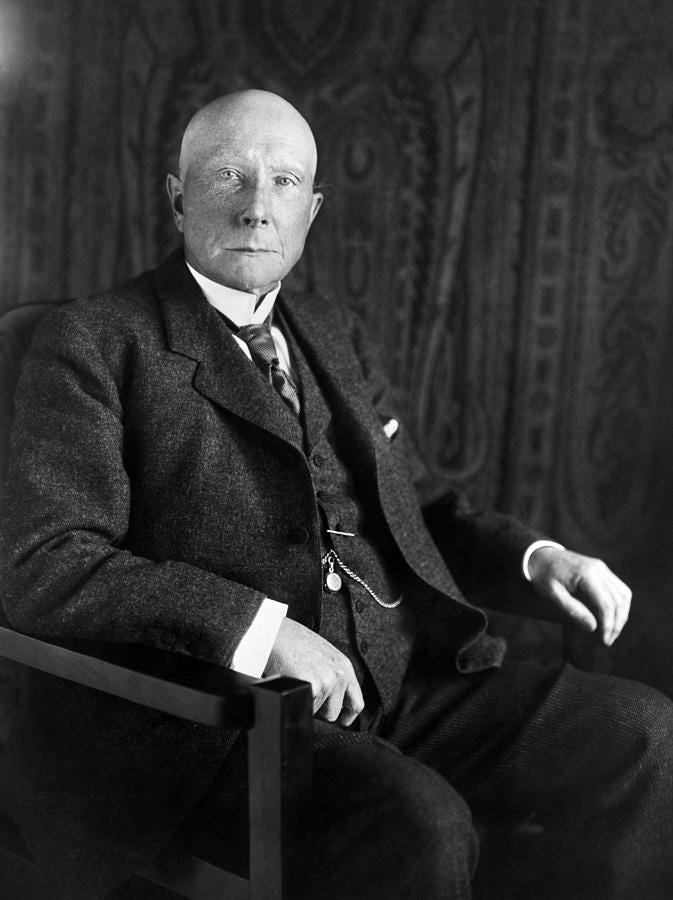
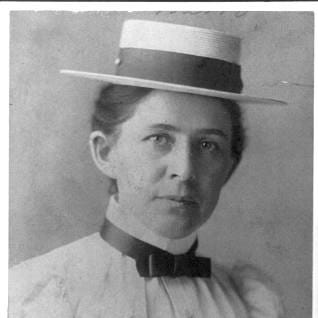

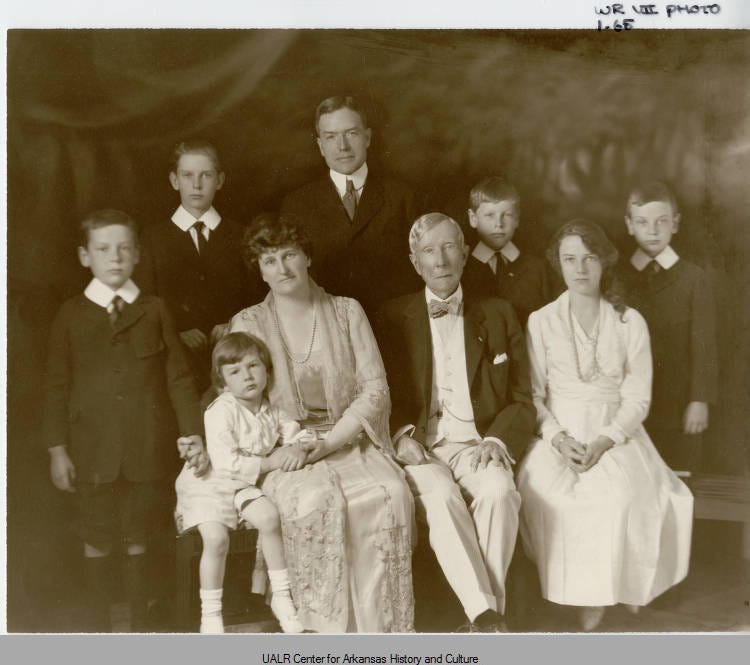
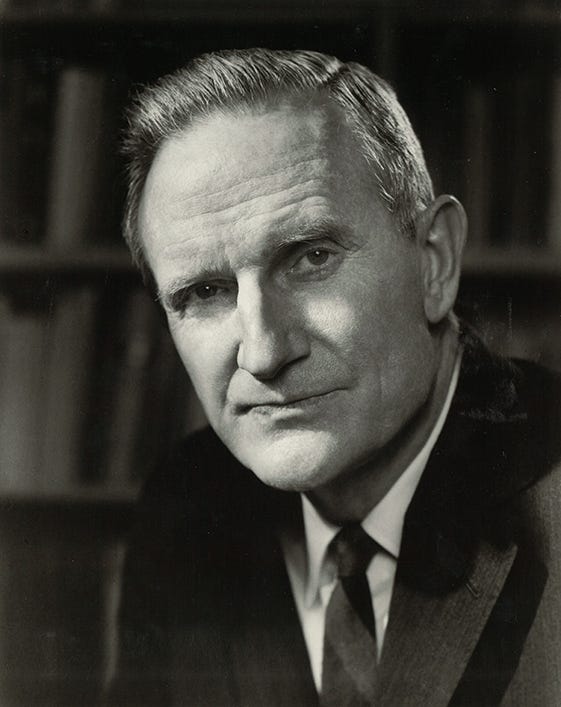
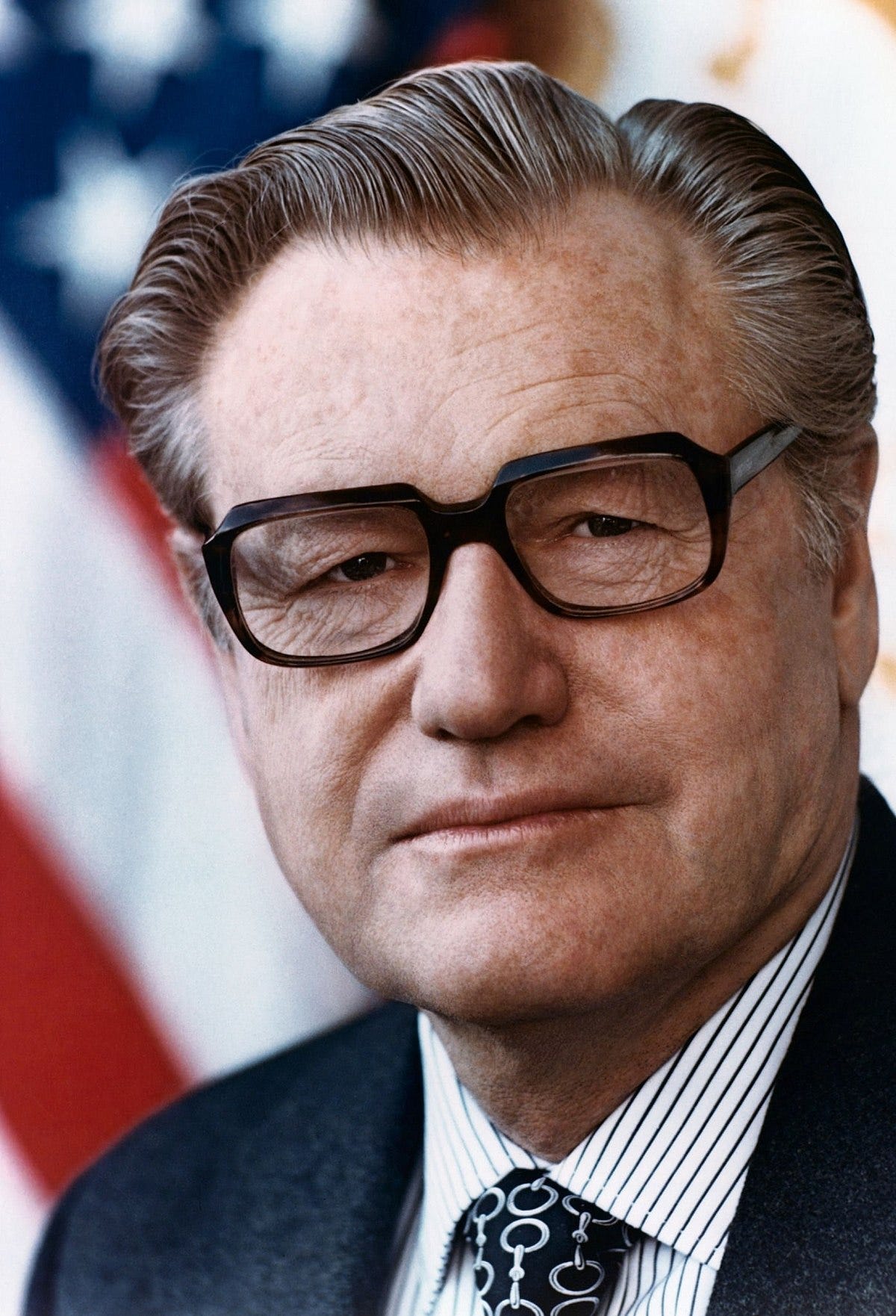
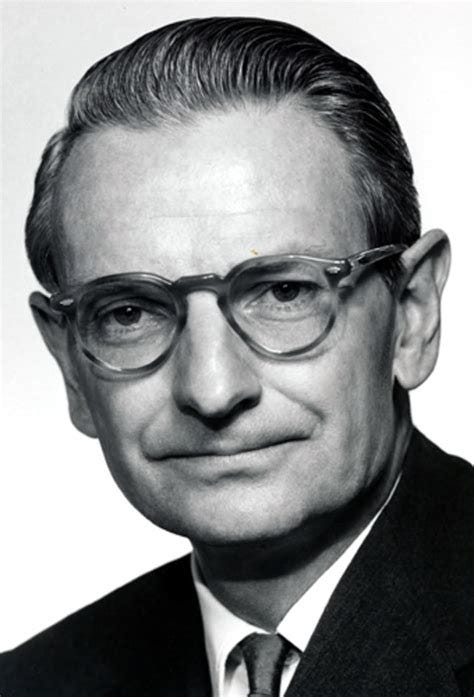
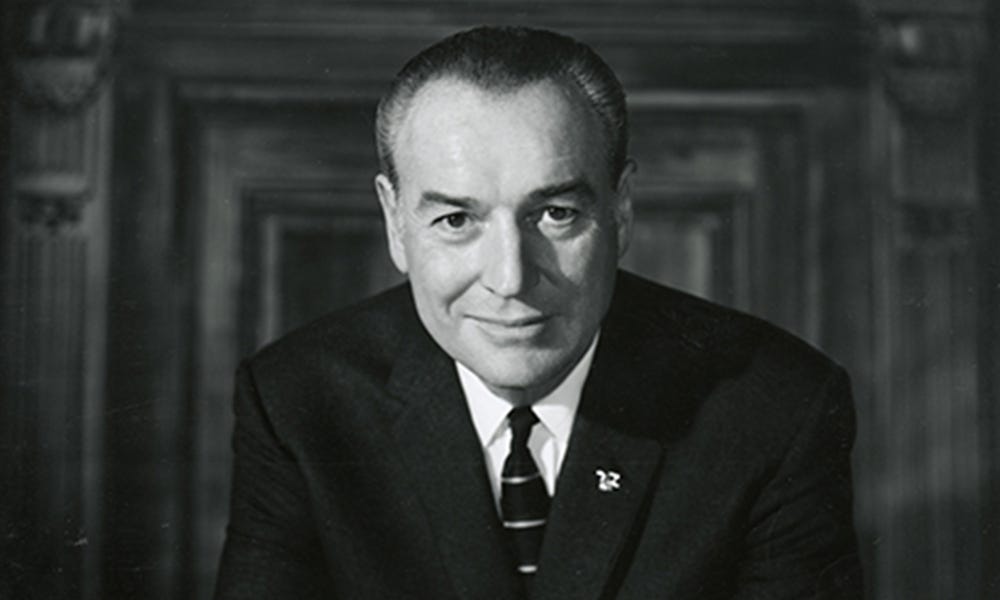
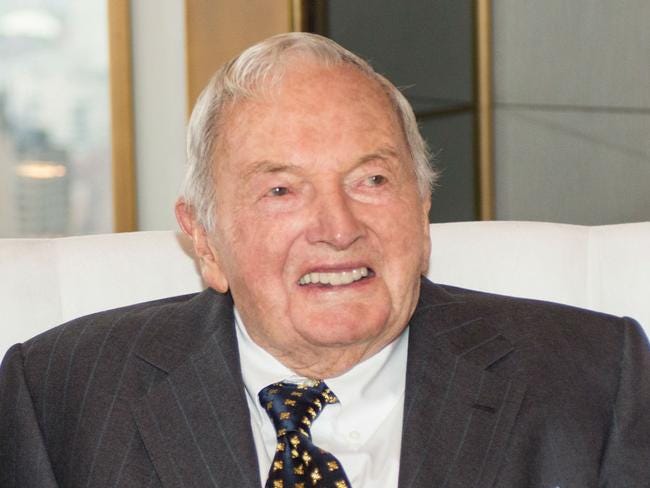
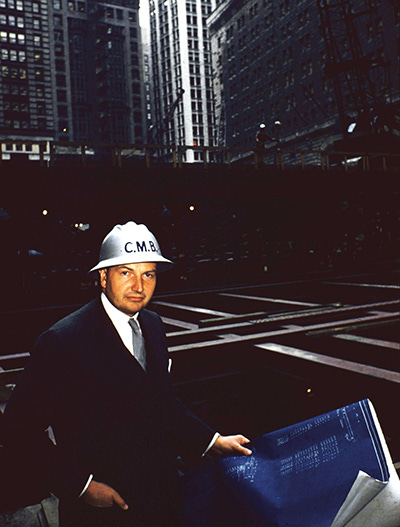
Incredible article! Thank you for this history course. Wish I could remember more of it!😊
Yes we need this kind of detailed history desperately. These families rose to power after the civil war along with Vanderbilts, Carnegies, and more. The link between the increase in Federal power and these piratical, immoral kleptocrats is unmistakable.